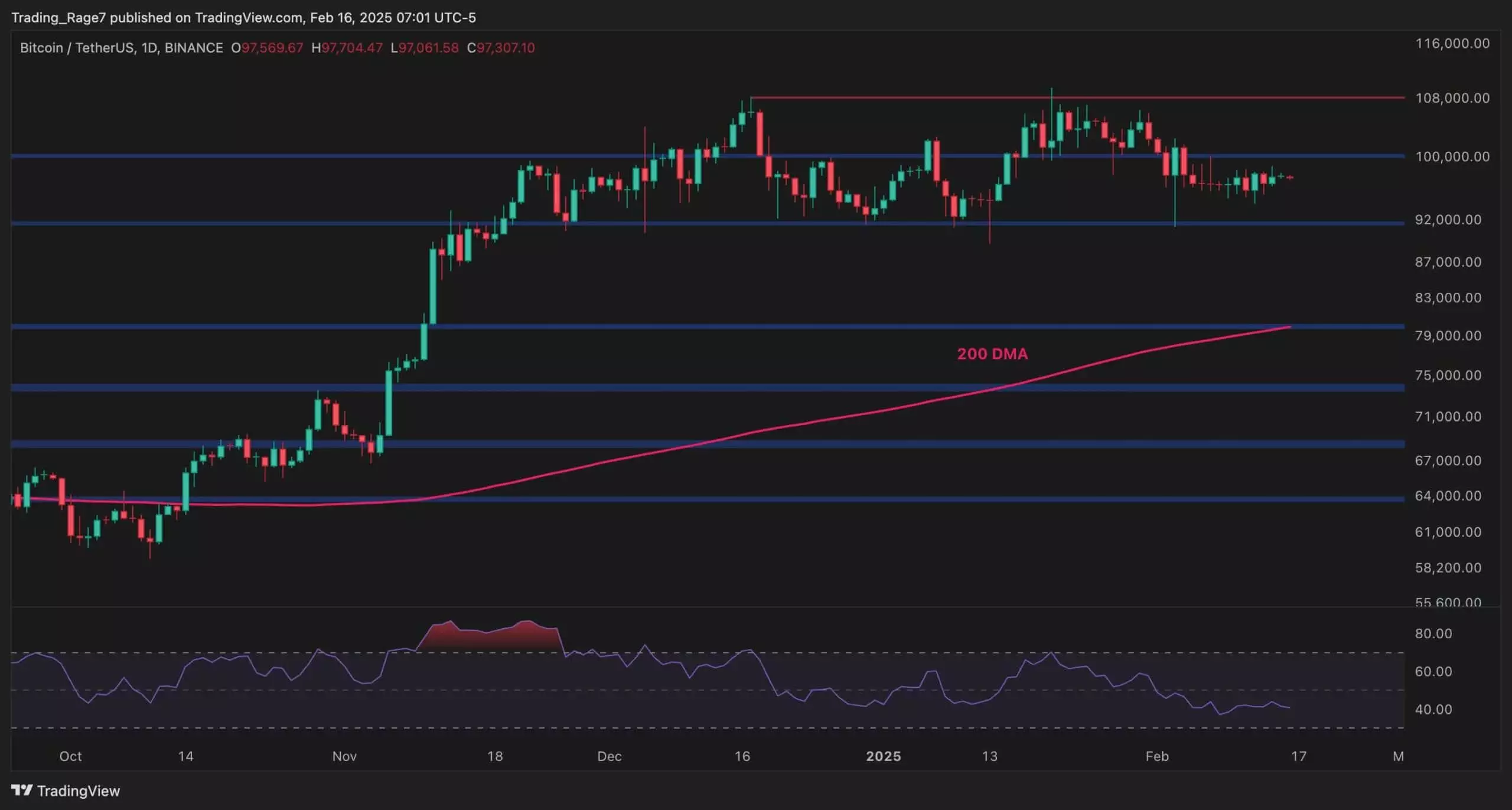The cryptocurrency market has found itself in a perplexing situation, with Bitcoin’s price exhibiting a remarkable lack of movement. After a significant decline below the psychologically important $100,000 threshold, Bitcoin is now caught in a narrow trading range, hovering around the $92,000 mark. This stagnation fuels a critical inquiry: is the market accumulating potential for a bullish resurgence, or is it enduring a phase of distribution, potentially signaling further declines?
When analyzing Bitcoin’s performance on the daily chart, the signs do not seem particularly encouraging. The relative strength index (RSI) has persistently remained under the neutral 50% level, reflective of bearish momentum. Furthermore, despite Bitcoin maintaining a position above the 200-day moving average, currently situated near $80,000, the threat of a deeper correction looms large. Should the market plunge toward this major support level, traders might brace for further instability before any signs of recovery emerge.
On the 4-hour chart, Bitcoin exhibits a formation of a symmetrical triangle—a classic consolidation pattern—and the price movement appears to be testing the lower boundaries of this figure. Each rejection from the upper boundary raises concerns about potential bearish momentum, especially as the RSI dips further below the pivotal midpoint. Traders are preparing for a possible breakdown, as a decisive breach below the triangle could prompt a swift withdrawal to the $92,000 region.
One cannot overlook the psychological aspects influencing Bitcoin’s price trajectory. The erratic behavior displayed recently suggests that market sentiment is teetering on the edge of uncertainty. An understanding of accumulation and distribution patterns becomes crucial for predicting Bitcoin’s next moves. Insights gained from metrics such as the Bitcoin exchange reserve provide a window into supply dynamics; a decrease in reserve commonly signals bullish tendencies since fewer coins on exchanges might indicate potential accumulation by long-term holders.
However, the recent uptick in exchange reserves, following a prolonged decline, raises red flags. Increased reserve levels may signify that traders are preparing to liquidate their positions in anticipation of a market downturn, reflecting a lack of confidence in immediate price appreciation. As this trend develops, analysts caution that the path forward could involve further declines, especially if the surge in reserves continues.
While the current market conditions might feel stagnant, they are ripe for analysis. Observing how Bitcoin interacts with established support and resistance levels will provide essential signals for traders. Understanding whether the recent patterns indicate panic selling or strategic accumulation remains pivotal in discerning the market’s future direction. As the crypto community watches closely, the evolving sentiment amongst participants will play a significant role in shaping the price action ahead. Ultimately, Bitcoin’s next moves will hinge on whether the current market consolidation leads to robust recovery or a troubling descent.
















Leave a Reply